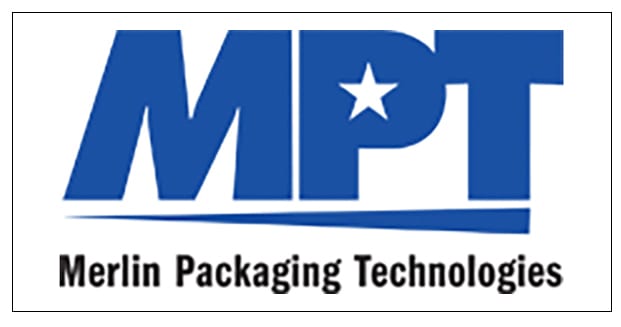Image courtesy of kynny / iStock / Getty Images Plus
We have compiled descriptions and usage information for hundreds of types of equipment used in the development, production, and application of adhesives and sealants and related products. To find equipment suppliers, reference the advertisers throughout this issue and be sure to visit our easy-to-use online Equipment Handbook at www.adhesivesmag.com/equipmenthandbook.
Equipment descriptions are provided alphabetically in two sections: A-L and M-Z. The first section begins below; you can navigate to the second section via the right-hand arrow or through the Table of Contents. We also invite you to reference the supplier* mini-ads throughout this section, and click or tap them to learn more about each company’s offerings.
*Supplier mini-ads represent paid advertising. If you are an equipment supplier and would like to receive information regarding your company’s inclusion in the online Equipment Handbook or with mini-ads in future editions of ASI, contact Stacey Hurley, Directory Enhancement Sales, at 248/786.1662 or hurleys@bnpmedia.com.
Equipment Descriptions, A-L
ABRASION TESTING
(See Testing Equipment/Instrumentation, Abrasion.)
ADHESION TESTING
(See Testing Equipment/Instrumentation, Adhesion.)
AGITATORS
Industrial mixers that typically mix substances with low viscosities in low-shear applications. Sizes range from small agitators used in laboratory applications to large industrial agitators with 10,000-gal capacities.1
APPLICATION EQUIPMENT
Equipment used to apply adhesives, such as melters, meter/mix/dispensers, static mixers, guns, and syringes. (See also Caulking Guns and specific categories for additional details.)
BAGS
(See Containers, Bags.)
BLENDERS
Blenders mix substances with comparable viscosities into a homogenous solution. The equipment is used to thoroughly combine any type of liquid or solid during the manufacturing process; blenders are usually large tanks or vats with motorized blades or paddles that rotate on a stationary shaft or remain stationary themselves. Usually stainless steel, especially within the food and beverage industry; other materials include aluminum, steel, or cast iron.2
Ribbon
Ribbon blenders are economical, slow-speed horizontal mixer/blenders for a variety of dry, liquid, or slurried products. These blenders typically comprise a double-helix agitator, U-shaped mixing trough, hinged cover, drive system, support legs, and a discharge valve. Typical sizes range from 1-350 cu ft.
Turbulent Paddle
Turbulent paddle blenders are moderately intensive, medium-speed mixer/blenders for a variety of dry, liquid, or slurried products. They typically comprise a single shaft with pitched paddles, cylindrical-shaped mixing body, hinged cover, drive system, support legs, and a discharge valve. Typical sizes range from 1-350 cu ft.
BOTTOM-ENTRY MIXERS
(See Mixers & Mixing Equipment, Bottom-Entry.)
BULK CONTAINERS
(See Containers, Bulk.)
CARTRIDGE LOADERS
Cartridge loaders allow users to fill caulking guns and cartridges from 5-gal pails.
CARTRIDGES
(See Packaging Equipment, Cartridges.)
CAULKING GUNS
Caulking guns are available in manual, pneumatic, and battery variants and range in style, shape, price, and features. Single-component applicators, commonly referred to as caulk guns, accommodate cartridges, sachet (sausage) packs, and bulk packaged materials. The two most common sizes of cartridges in the United States are 10.3 oz. and 29 oz.
Dual-component applicators, often referred to as bi-mixers, are used for dispensing two-part epoxy systems. These systems are typically packaged in cartridges, but they also come in sausage packs.3 (See also Application Equipment.)
CHUBS
Cylinder-shaped container formed by a tube of flexible packaging material. Also known as sausages. (See also Packaging Equipment, Chubs.)
COATERS & COATING EQUIPMENT
Equipment used to precisely apply adhesives, sealants, and coatings. The equipment needed depends on the specific coating method, such as: slot die; bar; coil; Meyer rod (also known as wire-wound rod); direct or reverse roll; reverse, direct, or offset gravure; knife-over-roll; curtain; calendaring; and more. Systems can also incorporate drying and curing equipment that follow the application process.
COAXIAL MIXERS
(See Mixers & Mixing Equipment, Coaxial.)
CONE-SCREW MIXERS
(See Mixers & Mixing Equipment, Cone-Screw.)
CONTAINERS
Various types of containers are used to manufacture, transport, and apply adhesives, sealants, and coatings. See specific categories for details.
Aluminum Shipping
A transportable box produced in standard sizes used for shipping goods around the world.
Bags
Raw materials and finished adhesives and sealants can be packaged in bags, depending on the material and end use requirements. Bags can be designed to provide additional benefits such as protection from moisture or static.
Bulk
Containers designed to hold or transport large amounts of liquid or dry materials. Bulk containers come in myriad shapes and materials of construction to suit various requirements. Depending on the materials involved, bulk containers can be reused or recycled.
Cans
Containers commonly used for oil, chemicals, and other liquids.
Corrugated
Corrugated boxes comprise multiple layers of material (e.g., cardboard) that provide added resilience; they are available in myriad sizes and shapes to provide lightweight containers for various materials. Larger shipping containers (e.g., for rail or sea) are often made of corrugated metal (e.g., steel), which provides stability and protection during the transport of large volumes of materials.
Drums
Cylindrical containers used for shipping materials, typically in 55-gal volume.
Intermediate Bulk Containers (IBCs)
Typically pallet-mounted, intermediate bulk containers (IBCs) are used to store and transport bulk liquids and powders. IBCs, which can be reused depending on the material being transported, can generally be classified as rigid, folding, or flexible. They fall in the “intermediate” range in terms of volume, between drums and tanks.
Metal
Various-sized metal containers used to store and ship chemicals.
Pails
Cylindrical shipping container with straight or slanted sides, typically with a capacity of about 1-12 gal.
Plastic
Containers made of plastic.
Steel
Durable and reusable steel containers for storage and transport.
CONVERTING EQUIPMENT
In the converting process, rolls of continuous (and often quite long) sheets of materials (e.g., film, foil, and paper) are fed through different pieces of equipment in order to “convert” that material into final (or near final) products such as tapes and labels. Various converting steps can include coating, laminating, slitting, and more. (See also Converting Equipment, Slitters/Rewinders.)
Slitters/Rewinders
Slitter/rewinders cut rolls of material into narrower widths during the converting process. Material is fed through the machine and cut, and the cut portions are then rewound into separate rolls.
CORRUGATED CONTAINERS
(See Containers, Corrugated.)
COUNTER-ROTATING MIXERS
(See Mixers & Mixing Equipment, Counter-Rotating.)
CURE METERS
Used to measure the degree of curing of an adhesive, sealant, or coating. (See also Curing Equipment.)
CURING EQUIPMENT
While some adhesives, sealants, and coatings can cure at room temperature without assistance, many require a curing step in order to achieve their final desired characteristics. The specific equipment needed (e.g., lamps, conveyors, ovens) depends on the material to be cured and the curing method, such as electron beam (EB), LED, ultraviolet (UV), infrared curing, or spot curing. (See also UV Lamps & Equipment.)
DISPENSING EQUIPMENT
Devices used to apply bonding materials, which vary from glue or caulk guns to automated applicators. (See also Application Equipment.)
DISPERSERS
Dispersers are used to break apart lumps of powdery material, uniformly distributing and wetting them into a liquid.
High-Speed
High-speed dispersers rapidly break powdery material apart.
High-Viscosity
High-viscosity dispersers are used to mix and blend high-viscosity, non-flowing materials. They are typically used when slow-speed/high-viscosity paste mixing is required.4
Low-Speed
Low-speed dispersers are frequently used to handle special needs in mixing, such as maintaining critical temperatures.
Low-Viscosity
Dispersers used to handle low-viscosity materials.
Pastes
Dispersers intended for use in mixing pastes.
Rotor Stator
Also known as “wet grinding,” rotor-stator dispersers are used to crush, mix, or foam different components to evenly distribute them.
Tank-Mounted
Tank-mounted dispersers are mounted directly on top of the process tank or vessel, rather than having a separate leg or post to secure the dispersing head.6
DISPERSION TESTING
(See Testing Equipment/Instrumentation, Dispersion.)
DOUBLE-PLANETARY MIXERS
(See Mixers & Mixing Equipment, Double-Planetary.)
DRUM MIXERS
(See Mixers & Mixing Equipment, Drum.)
DRUMS
(See Containers, Drums.)
DUAL PACKS
(See Packaging Equipment, Dual Packs.)
DUAL-SHAFT MIXERS
(See Mixers & Mixing Equipment, Dual-Shaft.)
FILLING EQUIPMENT
Filling equipment is used to load adhesives, sealants, and other materials into various containers. Systems can be manual, semi-automatic, or automatic and are often designed for specific containers (e.g., syringes or cartridges). Types of systems include: time/pressure (consistent pressure and fill time are needed to deliver a specific volume); auger (volume is determined by the revolutions of the rotating auger/screw); net weight (a weigh scale controls the flow of the product); and volumetric (volume is premeasured with a metering cylinder and piston).
FLOW METERS AND CONTROLS
Meters and controls used to monitor and control adhesive flow rates.
FORCE TESTING
(See Testing Equipment/Instrumentation, Force.)
FRICTION TESTING
(See Testing Equipment/Instrumentation, Friction.)
GAUGES
Devices used to measure a physical quantity.
GLOSS METERS
Gloss is measured by shining a known amount of light at a surface and quantifying the reflectance. The angle of the light and the method by which the reflectance is measured are determined by the surface. A gloss meter directs the light at a specific angle to the test surface and simultaneously measures the amount of reflection. The type of surface to be measured determines the gloss meter angle to be used and thus the gloss meter model.
The intensity is dependent on the material and the angle of illumination. In case of nonmetals (e.g., coatings, plastics), the amount of reflected light increases with the increase of the illumination angle. The remaining illuminated light penetrates the material and is absorbed or diffusely scattered dependent on the color.21
GRINDING EQUIPMENT
Equipment used for grinding, typically machinery using an abrasive wheel as the cutting tool.5
HARDNESS TESTING
(See Testing Equipment/Instrumentation, Hardness.)
HIGH-SHEAR BATCH MIXERS
(See Mixers & Mixing Equipment, High-Shear Batch.)
HIGH-SPEED DISPERSERS
(See Dispersers, High-Speed.)
HIGH-SPEED ROTOR STATOR MIXERS
(See Mixers & Mixing Equipment, High-Speed Rotor Stator.)
HIGH-VISCOSITY DISPERSERS
(See Dispersers, High-Viscosity.)
HIGH-VISCOSITY MIXERS
(See Mixers & Mixing Equipment, High-Viscosity.)
IMPACT TESTING
(See Testing Equipment/Instrumentation, Impact.)
IMPELLERS
The rotating components of a centrifugal pump, usually made of iron, steel, bronze, brass, aluminum, or plastic, which transfer energy from the motor that drives the pump to the fluid being pumped. This is achieved by accelerating the fluid outward from the center of rotation.6
IN-LINE MECHANICAL MIXERS
(See Mixers & Mixing Equipment, In-Line Mechanical.)
IN-LINE MOTIONLESS MIXERS
(See Mixers & Mixing Equipment, In-Line Motionless.)
INTERMEDIATE BULK CONTAINERS
(See Containers, Intermediate Bulk Containers (IBCs).)
JACKETED HALF-PIPE OR DIMPLE MIXERS
(See Mixers & Mixing Equipment, Jacketed Half-Pipe or Dimple.)
LABORATORY EQUIPMENT
Equipment used for testing and research and development. See specific categories for additional details.
LAMINATING MACHINERY
Equipment used to spread adhesive onto a sheet stock.
LOW-SHEAR MIXERS
(See Mixers & Mixing Equipment, Low-Shear.)
LOW-SPEED DISPERSERS
(See Dispersers, Low-Speed.)
LOW-VISCOSITY DISPERSERS
(See Dispersers, Low-Viscosity and Mixers & Mixing Equipment, Low-Shear.)


